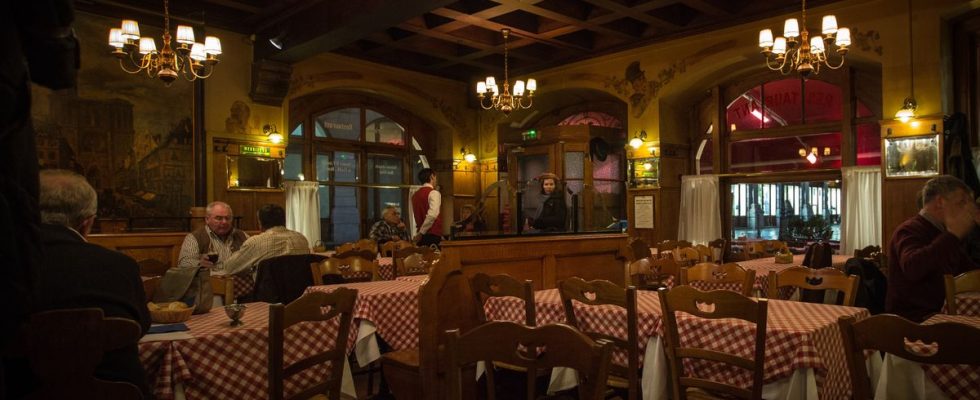It’s hard not to see them when you open the door of a “winstub”, these typical restaurants of Strasbourg and Alsace. Here as a tablecloth, there as curtains, sometimes as napkins, tea towels, cushions… Kelsch is available almost everywhere in the rooms with this constant: these famous tiles. Not just any color! Red, blue, green, black and yellow ochre, nothing else.
“Because these are the historical shades that were used, always on an ecru base,” explains Pia Clauss, head of a boutique specializing in this “mixed race”. Kelsch is indeed a mixture. “For us, it is 55% linen which will form the weft (the horizontal) and 45% cotton for the warp (vertical)”, continues the seamstress based in Seebach (Bas-Rhin) recalling the distant origins of his favorite product. “In the 16th century, it was made from the Cologne region (in Germany) to Montbéliard. »
Bandana for your dog, school kit, bib, etc.
The precious fabric, where hemp then replaced cotton, was then used for bedding and to make alcove curtains. The tradition continued in Alsace where, for a long time, farmers made them, often in winter. “There were looms everywhere,” explains Pia Clauss, passionate about the subject. So much so that, in 2017, it decided to relaunch semi-industrial production. The Gander company based in Muttersholtz, the last to perpetuate traditional kelsch weaving, had just closed following the death of its founder.
“So I had to find another weaver and draw up specifications with designs, mixtures, etc. », indicates the one who is today the main wholesaler in the region. She gives her instructions to the Emanuel Lang Filature in Hirsingue (Haut-Rhin) and then receives the rolls. Which are then resold elsewhere or… transformed for numerous uses. At “Kelsch d’Alsace”, you can find a bandana for your dog, a school kit, a bib, a washcloth, a lampshade. All of course in the famous fabric, like the most classic tablecloths, napkins and other tea towels.
How to respond to increasingly strong demand? The entrepreneur obviously does not say the opposite. “After Covid, we felt a real change. People today are increasingly looking for identity and heritage,” she assures, before referring to an “increasingly younger” clientele. Who thus turns their back on a previous generation for whom the famous tiles could seem invasive. Old-fashioned and often old-fashioned since they are present in every grandparent.
“It was for people who had the means”
“There weren’t any everywhere either,” explains his employee and also seamstress, Sandra. “It was for people who had the means. The lowest incomes could not afford it. It remains a noble product. » Made with very expensive linen, of a good thickness – “almost that of jeans” – and robust. “I didn’t know about it before, but the more I use these tea towels, the more I want to use them,” says a customer of the store, who plans to expand her collection.

Kelsch has also made a comeback in interiors, even the most contemporary and refined. As at the “Au Heimbach” hotel, in Lembach (Bas-Rhin). “It’s paradoxical for a century-old product but it allowed us to modernize,” laughs owner Gilles Allenbach. With his wife, they decided to use the fabric for curtains, sometimes just on top, and for cushions. “It’s local and it’s in the spirit of the times to consume like that. In addition, if people go sightseeing, it is not to see Chinese products,” he explains, also not satisfied with tiles. Next year, the restaurant’s napkins will also be made of kelsch. For a new, discreet touch. “The risk is to add too much and fall into kitsch! »
Pia Clauss watches over this. “We showed people that it could be combined with other fabrics, for other objects like a lampshade. It gave another image to kelsch. It was a real challenge. » The fabric nevertheless does not lose its hyper traditional side, borderline cliché of this eternal Alsace. The proof is that his company has just equipped an almost world-famous monument: the great fir tree of Strasbourg. The little hanging hearts are made of real kelsch.

